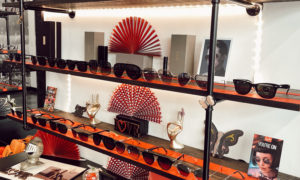
Sept. 21, 2016
Your patients have a few key reasons they purchase multiple pairs of eyewear, findings from The Vision Council’s 2015 Fashion Versus Function Study suggest: (1) convenience purposes (to have different pairs in different locations), (2) a back-up pair in case they misplace their current pair, and/or (3) functionality (to have different pairs for different activities). At this time only a small minority of multiple-pair eyewear owners are coordinating their eyewear and their wardrobe for fashion purposes.
Looking at the numbers, the average person spends about $1,500 a year on clothing and a range of $2,000-$10,000 on cosmetics per year. To put things in perspective, the average person spends between $200 and $400 for one pair of glasses, and only buys one pair every 28 months while wearing them every day.
Let’s create a system to help patients who need multiple pairs.
Step 1: Explain your guarantee. Since the purpose of a guarantee is to lower the barrier to purchase, let’s lower that barrier upfront.
Step 2: Give them a polarized lens demonstration. You can’t just tell someone about the difference between a polarized sun lens and a sun lens that just darkens, the patient needs to experience the difference.
Step 3: Put on your consultant hat. Find out what the patient does at home, school, work and play. Use a chart that has these headers: Priority – Problem – Lens solution.
After the patient identifies all problems, then have the patient prioritize the solutions. Make sure the patient sees you fill in the chart.
This is the perfect time to remember The Vision Council’s 2015 Fashion Versus Function Study. Patients are purchasing multiple pairs for the following reasons: (1) convenience (having different pairs in different locations), (2) back-up pairs in case the current pair is misplaced, and (3) functionality (to have different pairs for different activities).
Step 4: Opticians tell us that it is better to choose the lenses first and the frames second. When patients choose in the opposite order, if they choose a higher-priced frame then they are more likely to want to downgrade the lenses, however, when the lenses are chosen first, fashion-conscious patients more likely to upgrade the frame.
Step 5: Tell the patient, “Now, let’s see what your insurance contributes.” The operative word is “contributes” not “covers.” This is also the time to bring into the discussion any in-office multiple-pair discounts. When discussing fees with patients be sure to talk about their out-of-pocket fees. The only reason to talk about the total fee is to use it to show the “value” the patient is receiving. “The total would normally be $X, however, because you are taking advantage of our in-house discount (or because you have vision insurance), your fees today are only $Y.”
This is also the step to ask the question: “Is there anyone else who needs to be included in this buying decision?” In today’s world, very few people make buying decisions independently. Most people have to justify their buying decision to someone else. Let’s make sure that we are in the middle of that discussion.
Remember the fundamental rule: If you only present one optical solution, the patient will only purchase one optical solution.
References
http://www.theopticalvisionsite.com/sales/multiple-pairs-sales/



























